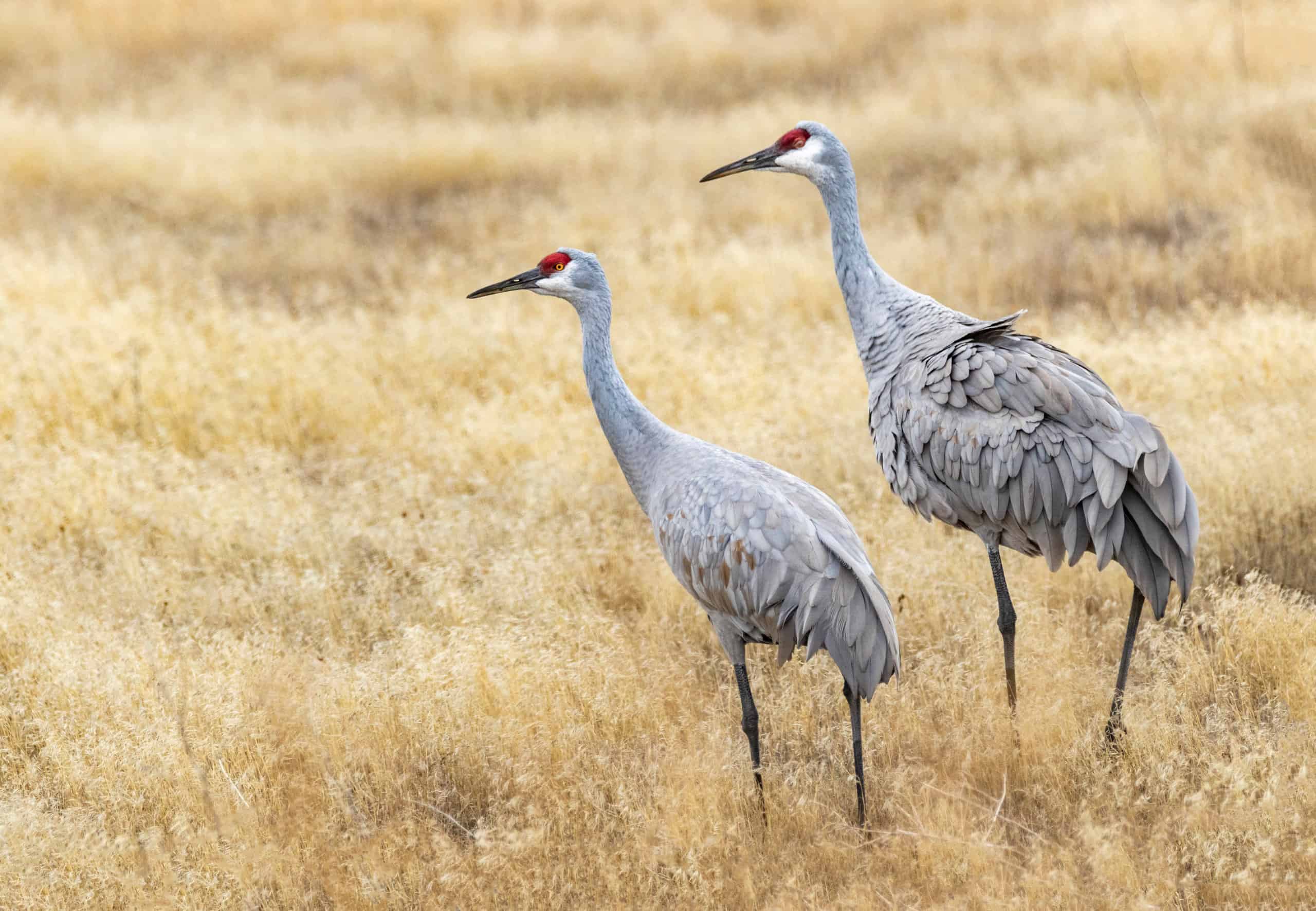Despite being home to Milwaukee and Green Bay, much of Wisconsin is half-tamed or untamed wilderness. That means this state is the perfect place to find a variety of different creatures living in the land, air, and water. In this article, we’re going to look at various types of the largest animals in Wisconsin to show you just how big animals can get in this neck of the woods.
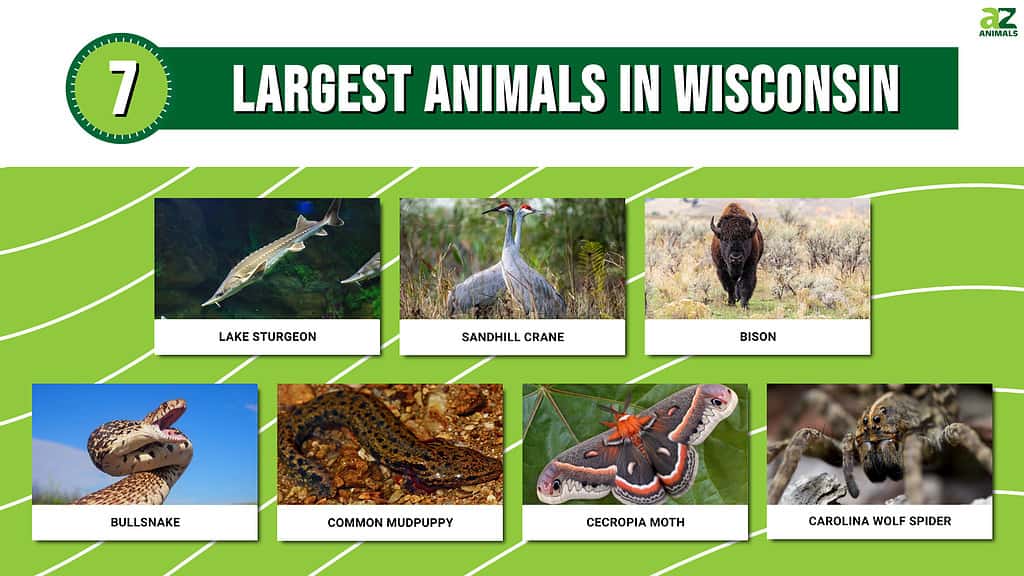
Located in the far north of the U.S., the state of Wisconsin is home to creatures that are rarely found in or absent from other parts of the country. That means we have the opportunity to explore some rather large animals.
Of course, we’re going to examine mammals, reptiles, and fish, but we’re also going to look at the biggest version of small creatures, like insects and amphibians. So, without further ado, let’s delve into the seven largest animals in Wisconsin and see where you can find them!
1. Lake Sturgeon
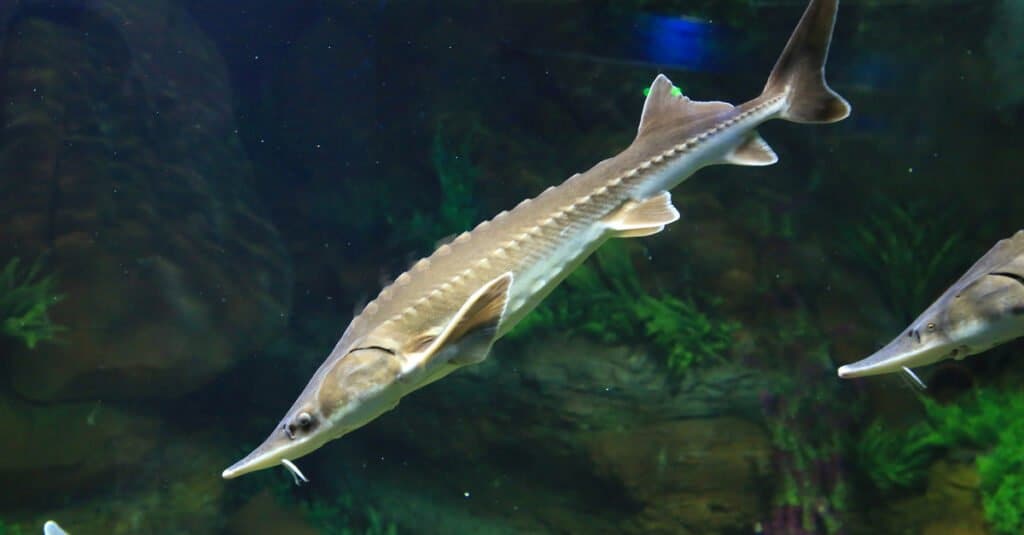
Lake sturgeon is a freshwater fish that can grow up to 6.5 feet.
©Geermy/Shutterstock.com
| Scientific Name | Size | Location |
|---|---|---|
| Acipenser fulvescens | 4.5 to 6.5 feet | Found in rivers such as the Menominee River, Namekagon River, Chippewa River, and some lakes. |
The lake sturgeon is the largest fish in Wisconsin, but it is a rare one. Most of these fish in the state measure somewhere between 55 and 79 inches, but fishers have brought in more sizeable creatures. For example, one fisher in the 2022 season caught a 174.3-pound lake sturgeon that measured 82.4 inches long.
This fish is usually found in rivers such as the Menominee and Chippewa, but some populations live in lakes. Notably, you can find them in Lake Winnebago and the Upriver Lakes. These fish feed on the bottom of bodies of water, consuming clams, crayfish, and small invertebrates.
2. Sandhill Crane
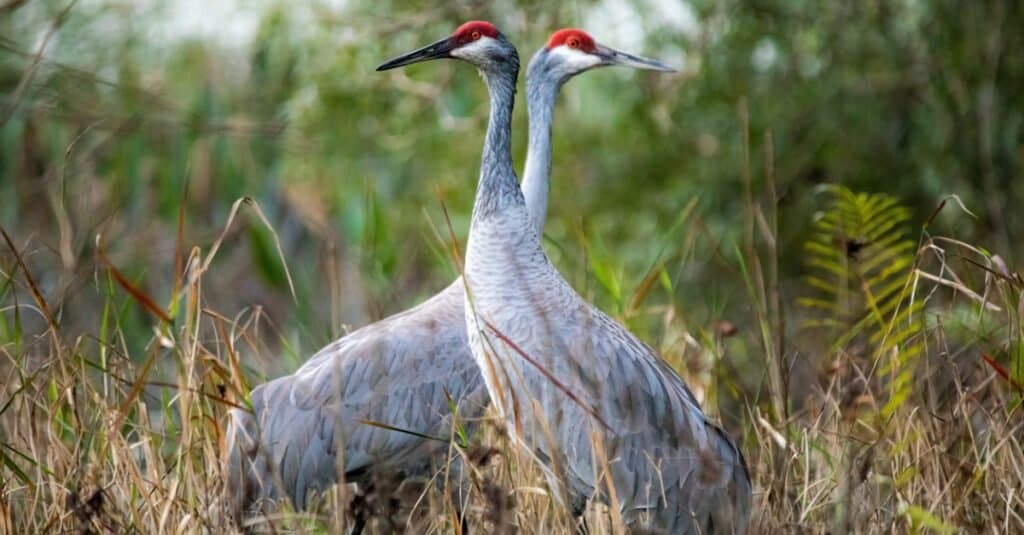
Sandhill cranes are primarily found in marshes in Wisconsin.
©iStock.com/GummyBone
| Scientific Name | Size | Location |
|---|---|---|
| Grus canadensis | 5 to 7.5 ft wingspan | Primarily found in marshes, but they are migratory |
The sandhill crane is the largest bird in Wisconsin, but it doesn’t live there year-round. Instead, this bird usually travels quite a bit no matter if it’s a migratory type or non-migratory type. Sandhill cranes are seen around lakes and marshes, and they are not too particular about the different types of food they eat.
They often feast on corn, berries, insects, amphibians, and even small mammals. These birds have a wingspan that can reach 7.5 feet in length, making them an incredible sight to behold as they fly. Interestingly, some subspecies of this crane can be found as far south as Florida.
3. Bison
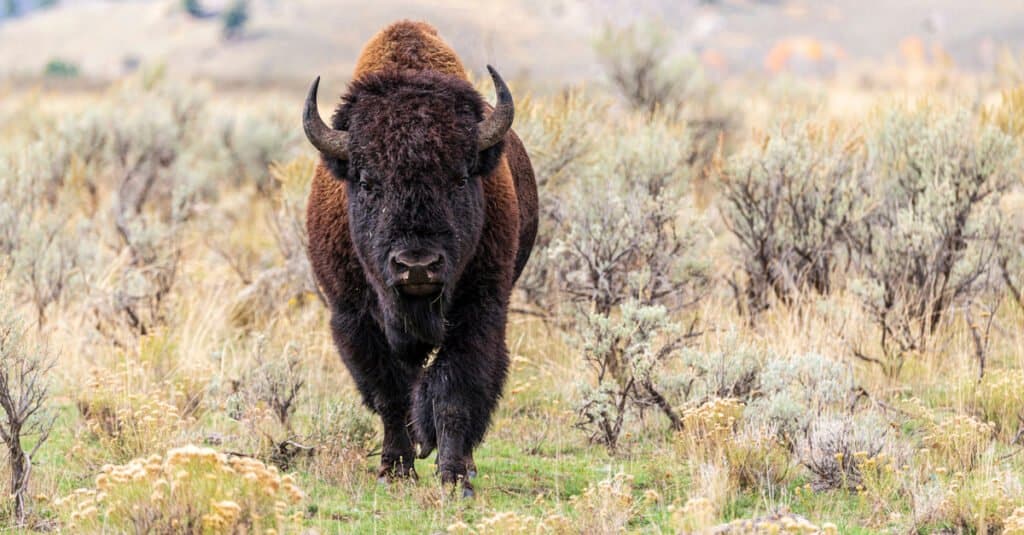
The bison is the biggest land mammal in Wisconsin.
©Grey Mountain Photo/Shutterstock.com
| Scientific Name | Size | Location |
|---|---|---|
| Bison bison | 7 to 11.5 feet | A small herd is in Sandhill Wildlife Area and others are kept on farms. |
By most measures, bison are the largest animals in Wisconsin and the United States as a whole. Adult male bison can weigh over 2,000 pounds and measure 11 feet long from head to tail. These are massive animals that consume grass and sedges while they forage with their herds.
The numbers of bison in this state are small, though. After all, bison are just starting to come back from the threat of extinction, and their wild numbers aren’t too high just yet. They can be found in Sandhill Wildlife Area in Wisconsin, but some others are kept as livestock on farms.
Perhaps the future will see greater numbers of bison returning.
4. Bullsnake

Bullsnakes in Wisconsin vibrate their tails to mimic the venomous rattlesnake.
©Markparker1983/Shutterstock.com
| Scientific Name | Size | Location |
|---|---|---|
| Pituophis catenifer sayi | 4 to 6 feet, up to 8 feet | Typically found in northern and western Wisconsin. |
The bullsnake or bull snake is a subspecies of the gopher snake, and it grows rather large. Typically, these constrictors will reach lengths that exceed 6 feet, but they can also grow upwards of 8 feet long in some cases.
Bullsnakes are considered protected in Wisconsin, so they’re not allowed to be kept as pets. Also, it’s not a good practice to kill them. Unfortunately, they’re known for their attempts to impersonate a rattlesnake when scared even though they’re not venomous snakes.
Unfortunately, you won’t find many of these snakes in the state. If you do, the chances are that they will be in the northern and western counties.
5. Common Mudpuppy
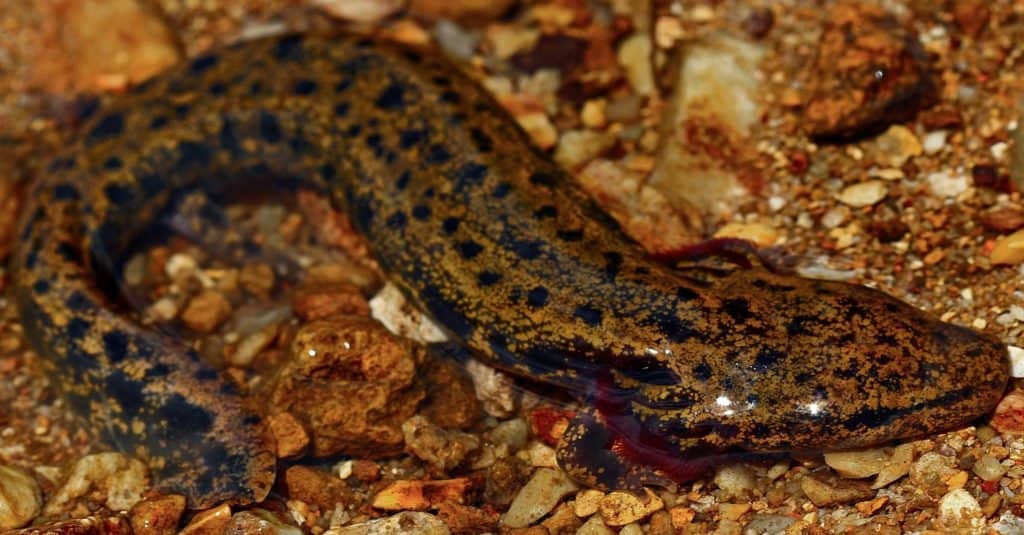
The common mudpuppy can grow to over a foot and half.
©Peter Paplanus from St. Louis, Missouri / CC BY 2.0, via Wikimedia Commons – Original / License
| Scientific Name | Size | Location |
|---|---|---|
| Necturus maculosus | 8 to 17 inches | Often found in rivers, lakes, and other bodies of water. |
The common mudpuppy is a long, aquatic salamander that is frequently found in rivers, lakes, and other bodies of water. They are not fans of staying out in the open, though. You’ll have to turn over some obstructions like logs and rocks to locate one.
These amphibians can grow about a foot and a half long, so they are quite noticeable despite their dark coloration. The common mudpuppy prefers to eat fish, worms, insects, mollusks, and more. Although they’re not the largest animals in Wisconsin, they’re still very interesting creatures.
6. Cecropia Moth

The Cecropia moth is the largest and heaviest moth in North America.
©Cathy Keifer/Shutterstock.com
| Scientific Name | Size | Location |
|---|---|---|
| Hyalophora cecropia | 5 to 7 inches in wingspan | Typically live in hardwood forests. |
The Cecropia moth is the largest moth in Wisconsin as well as the country as a whole. This beautiful silk moth has a wingspan that can reach between 5 and 7 inches. However, it isn’t often found in wide swaths of the state.
Instead, these moths tend to appear in hardwood forests even though they are attracted to streetlights and other lights put on by humans. Thus, it is possible to run into them in suburban and urban areas during night time when they are most active.
7. Carolina Wolf Spider
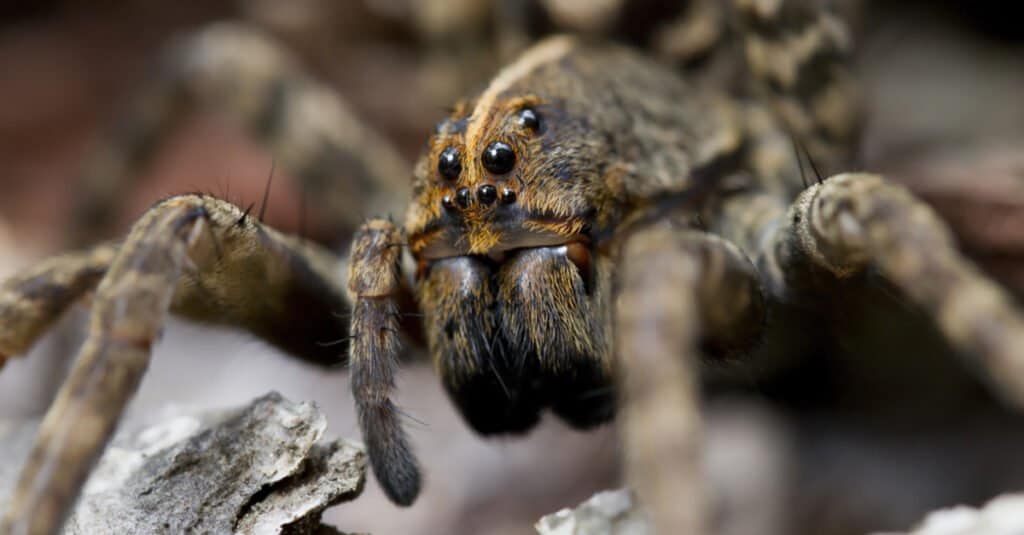
The Carolina
wolf spider
is the largest spider in Wisconsin.
©Will E. Davis/Shutterstock.com
| Scientific Name | Size | Location |
|---|---|---|
| Hogna carolinensis | 2 to 4 inches | Found in wooded areas, places with tall vegetation, fields, and homes throughout the state. |
The Carolina wolf spider is the largest spider in Wisconsin, and the biggest wolf spider in the U.S. Counting their legspan, these spiders measure up to 4 inches long! Although the size and speed of this spider alarms many people, the fact is that they can’t hurt people that much.
The worst most people will get is a bite that itches and swells. Some people are allergic to them, though. All in all, this spider is usually seen inside homes or roaming around tall vegetation where they eat insects and other arachnids.
Now that we’ve covered the largest animals in Wisconsin, it’s clear that this state is home to a few of the biggest creatures in the entire United States. Although many of them are harmless, a few of them are rather dangerous to people.
It’s always a good practice to steer clear of wild animals, especially large mammals and unidentified reptiles. In other words, enjoy the wild parts of Wisconsin, but be careful while you do.
Summary of the 7 Largest Animals in Wisconsin
| Name of Animal | Typed of Animal | Habitat |
|---|---|---|
| Lake Sturgeon | Fish | Rivers and some lakes. |
| Sandhill Crane | Bird | Marshes. |
| Bison | Mammal | Mostly Sandhill Wildlife Area. |
| Bullsnake | Reptile | Northern and western Wisconsin. |
| Common Mudpuppy | Amphibian | Rivers, lakes, and other water bodies. |
| Cecropia Moth | Insect | Hardwood forests. |
| Carolina Wolf Spider | Arachnid | Wooded areas, tall vegetation, fields, and houses. |
Thank you for reading! Have some feedback for us? Contact the AZ Animals editorial team.

